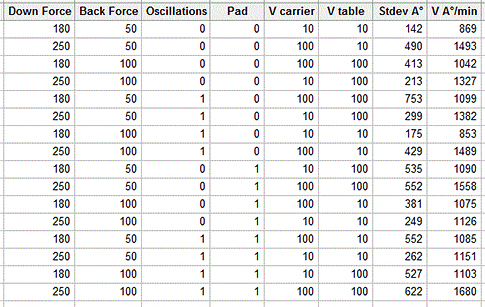In yesterday’s column, I discussed how a DOE was chosen to optimize a chemical-mechanical polishing process in the microelectronics industry. This important process improved the plant’s final manufacturing yields. We selected an experimental design that let us study the effects of six process parameters in 16 runs.
|
ADVERTISEMENT |
Analyzing the design
Now we’ll examine the analysis of the DOE results after the actual tests have been performed. Our objective is to minimize the amount of variability (i.e., minimize the Std Dev response) to achieve better wafer uniformity. At the same time, we’d like to minimize cycle times by increasing the removal rate of the process (maximize the V A°/Min response).
Therefore, we’re dealing with a multi-response DOE.

…
Comments
Fascinating
Cheers, I think DOE and Anova are are some of the most powerful tools engineers can bring to the table. Pure scientific process to accept or reject multiple hypotheses in a structured form. Brilliant writing.
Ken
Add new comment